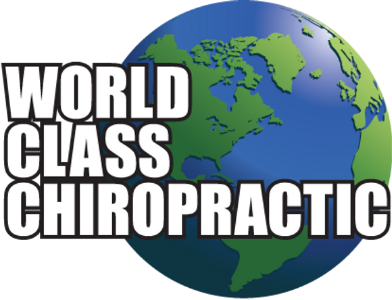Spinal adjustments, a cornerstone of chiropractic care, have gained popularity for their effectiveness in managing a range of health issues. But what lies beneath the surface of this practice? This comprehensive article delves deep into the science behind spinal adjustments, unraveling the mechanisms and benefits of this widely-used healthcare procedure.
The Anatomy of the Spine
Understanding the intricacies of spinal adjustments requires knowledge of the spine’s complex anatomy. Comprising 33 vertebrae, the human spine is divided into five regions: cervical, thoracic, lumbar, sacral, and coccygeal. This crucial structure serves as the body’s central support system, guarding the spinal cord and facilitating movement.
The Spinal Cord and Nervous System
At the heart of spinal adjustments lies the relationship between the spine and the nervous system. The spinal cord, a vital component of the central nervous system, traverses the vertebral column, acting as a communication bridge between the brain and the body. Any misalignment or dysfunction in the spine can disrupt this communication, leading to an array of health issues.
The Science Behind Misalignments
Subluxations: The Culprits
Subluxations, those subtle misalignments of vertebrae, can stem from a variety of factors such as poor posture, traumatic events, or the accumulation of daily stress. These subluxations exert pressure on spinal nerves, hindering the smooth transmission of signals between the brain and the body. This disruption can result in pain, discomfort, and even dysfunction in vital organs.
The Role of Inflammation
Inflammation plays a pivotal role in the genesis of subluxations. When the spine loses alignment, it can cause irritation and inflammation in surrounding tissues. This inflammation further intensifies the pressure on spinal nerves, creating a cycle of discomfort and dysfunction that can significantly impact an individual’s quality of life.
The Effects of Long-Term Misalignments
Chronic subluxations, if left unaddressed, can have far-reaching consequences. Over time, these misalignments may lead to degeneration of the spine and related structures. This degeneration can manifest as conditions such as osteoarthritis and even impact the function of nearby organs and tissues.
How Spinal Adjustments Work
Restoring Alignment
Chiropractors and healthcare professionals perform spinal adjustments to rectify subluxations and reinstate proper spinal alignment. This is achieved through precise manual manipulations or specialized instruments. By realigning the spine, the pressure on spinal nerves is alleviated, allowing for improved nerve function.
Releasing Endorphins
A captivating aspect of spinal adjustments is their ability to stimulate the release of endorphins, the body’s natural painkillers and mood enhancers. Patients often report immediate relief and an overall sense of well-being after a spinal adjustment.
Mobilizing Joints
In addition to realigning the spine, spinal adjustments promote the mobilization of joints. When joints become stiff or restricted due to misalignments, it can result in discomfort and a reduced range of motion. Through gentle manipulation, chiropractors can restore joint mobility, facilitating smoother, pain-free movement.
Benefits of Spinal Adjustments
Pain Management
One of the primary advantages of spinal adjustments is their efficacy in pain management. Individuals dealing with conditions such as back pain, neck pain, or headaches frequently find relief through chiropractic care. Rather than merely masking symptoms, spinal adjustments address the root causes of pain, offering long-term solutions.
Enhanced Range of Motion
Spinal adjustments can significantly enhance an individual’s range of motion. Correct spinal alignment enables joints and muscles to function optimally, leading to improved flexibility and mobility. This is particularly valuable for athletes and those who wish to maintain an active lifestyle.
Optimized Nervous System Function
By restoring proper spinal alignment, spinal adjustments contribute to enhanced nervous system function. The implications of this extend to overall health, including better immune system function and improved organ performance.
Headache and Migraine Relief
Chronic headaches and migraines can be debilitating, affecting one’s quality of life. Spinal adjustments have shown promise in alleviating these conditions by reducing tension in the neck and upper back, common areas of tension associated with headaches.
Digestive Health
Surprisingly, spinal adjustments can positively impact digestive health. The nervous system plays a pivotal role in regulating digestive processes, and when it functions optimally, it can lead to improved digestion and a reduction in digestive discomfort.
Preventative Care
While spinal adjustments effectively address existing issues, many individuals seek chiropractic care as a preventative measure to maintain overall health and well-being. Regular adjustments can help ensure that the spine remains aligned, promoting optimal nervous system function.
Customized Treatment Plans
Chiropractors often craft individualized treatment plans for their patients. These plans take into account an individual’s specific condition, lifestyle, and goals. This personalized approach ensures that each patient receives the most suitable care tailored to their unique needs.
The Role of Exercise and Lifestyle
In addition to spinal adjustments, exercise, and lifestyle choices play pivotal roles in spinal health. Chiropractors often provide guidance on posture, ergonomics, and exercises to complement the benefits of spinal adjustments. These lifestyle modifications empower patients to take an active role in maintaining their spinal health.
The Importance of Professional Care
While there are self-adjustment techniques, it’s crucial to emphasize the significance of seeking professional care for spinal adjustments. Chiropractors and healthcare providers undergo extensive training to ensure the safety and effectiveness of these procedures. Attempting self-adjustments without proper knowledge can lead to injury or worsen existing issues.
Conclusion
In conclusion, the science behind spinal adjustments unveils the profound connection between spinal alignment and overall health. By addressing misalignments and promoting optimal nerve function, spinal adjustments offer a holistic approach to health and well-being. If you experience pain or discomfort, consider consulting a professional for a comprehensive evaluation and potential spinal adjustments.
CONTACT US
